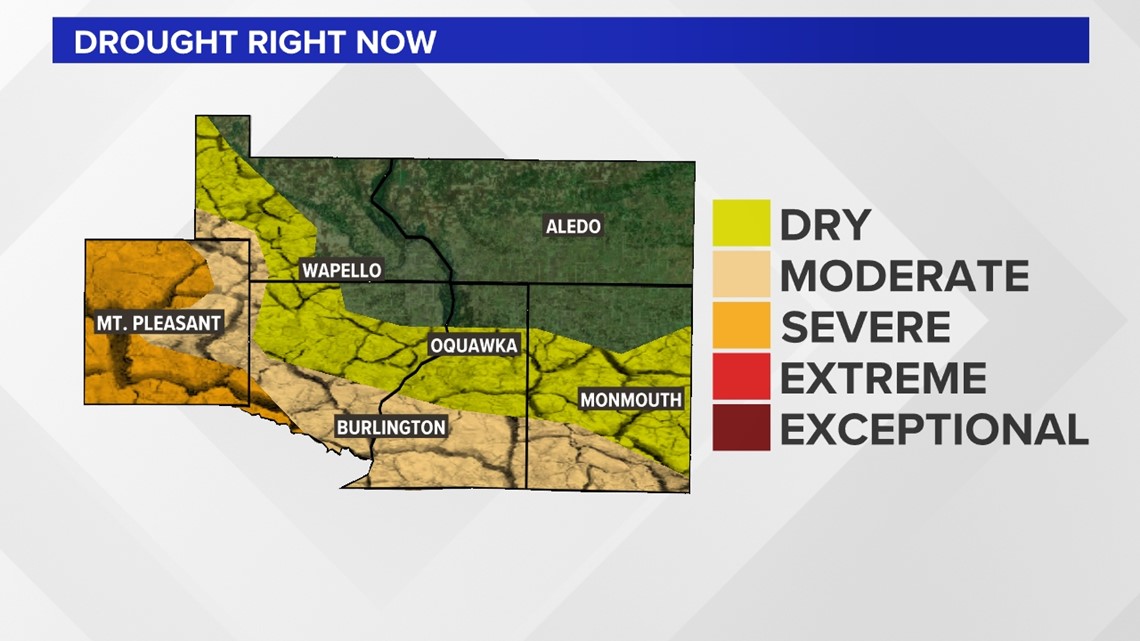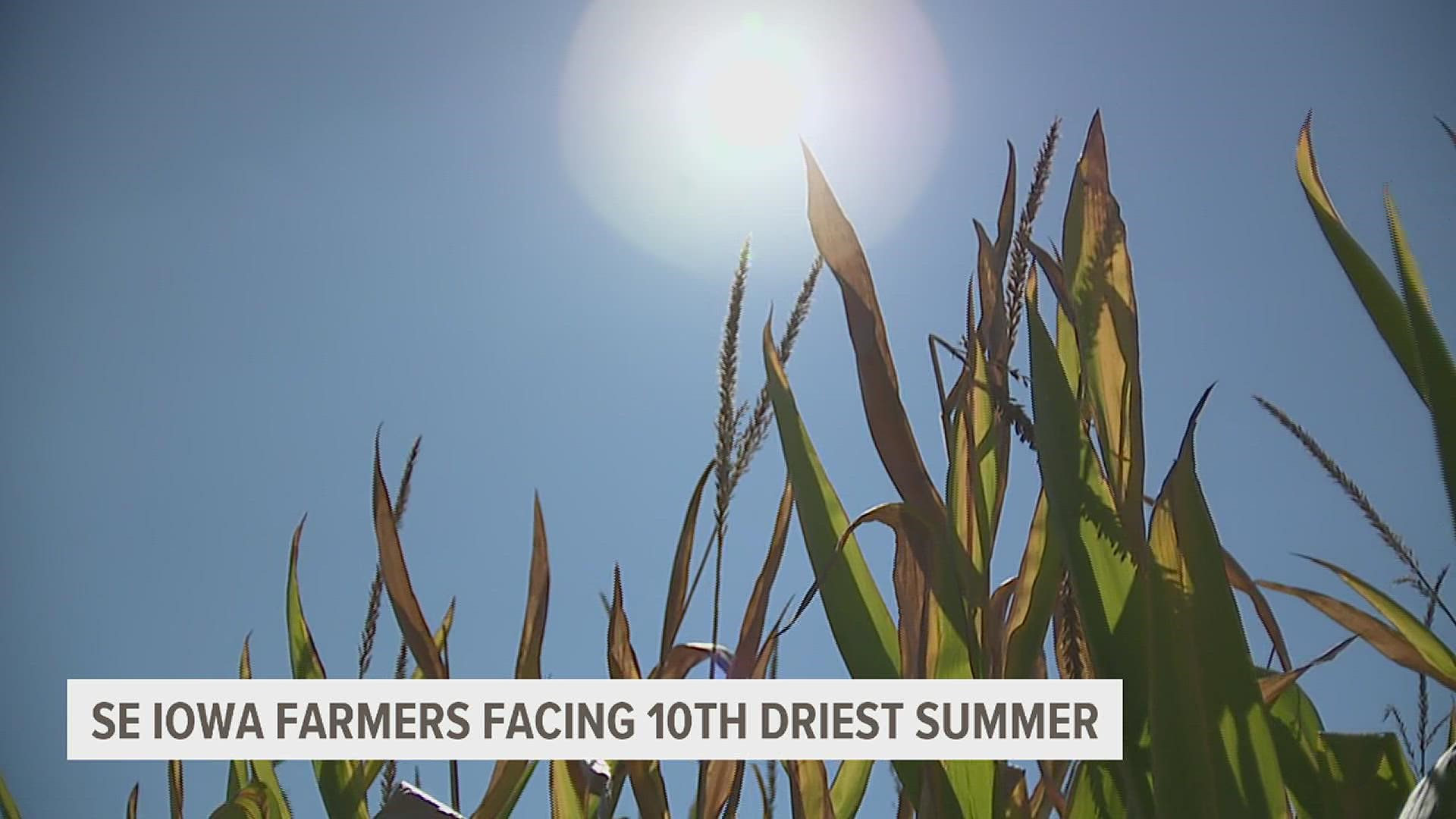MORNING SUN, Iowa — Parts of Southeastern Iowa are experiencing the tenth driest summer on record. But after a wet spring, area farmers say the lack of late-summer moisture isn't erasing all hope heading into a busy harvest season.
Since mid-July, rainfall has been scarce has sparse throughout Iowa's Henry, Louisa and Des Moines Counties. Drought monitors estimate the region is now nearly nine inches short of typical rainfall patterns by this time of year.
For Paul Gieselman, a fifth-generation Louisa County farmer, that impact isn't hard to see.
"We've seen it all. But this is a pretty exceptional drought. This is in the top four or five, probably of what I've seen, in the last 25 years," Gieselman said. "We're one pocket of many dry spots throughout the state."


Since the middle of July, the majority of his crops have only seen a half inch of rain in total.
But drought, like most weather, is spotty. While visiting with News 8, Gieselman pulled out three ears of corn, each grown a few miles apart. The corn grown on the eastern side of the county was still drought-stricken, but larger, heavier and filled with more kernels. On the other hand, his corn grown just 20 miles west was smaller, with missing tips where dry weather had sucked away the plant's energy.
"This is just 5 miles to the west and 15 miles to the east, I mean, there's just a huge difference here," Gieselman said.
But even that small difference can add up to huge costs. Drought-hit corn yields less during harvest season.
"That can be a 5-20 bushel difference, sometimes more, depending on how extreme the drought is," Gieselman said. "A 10-bushel loss would be roughly $60 an acre in today's market. And then you spread that out over multiple acres and you start to see some real numbers there."
Over in his soybean fields, it's much of the same story.
"What we're gonna run into this year is a smaller seed size. And seed size is roughly 30% of your total yield," Gieselman said. "They look alright. But they're starting to completely run out of water right now."


However, Gieselman said it's not time to give up harvest hope just yet.
"The idea that we're going to have an exceptional crop... that left in August. But I still have hopes for an average crop."
Discounting the drought, the region has actually had an exceptional growing season. A lack of severe storms, hail and insects, coupled with ideal moisture contents throughout June, are helping crops resist the current conditions.
Virgil Schmitt, an extension field agronomist covering 11 southeastern Iowa counties, says yields will be down but not out.
"I think the crops, in the big picture, are gonna be very good still. Have we taken the top off the yields? The answer's definitely yes - some fields more than others. But I think people are gonna be pleasantly surprised," Schmitt said.
He said Louisa and Des Moines Counties are two of several that have been on the 'miss' side of this summer's hit-or-miss rains. However, advancements in crop technologies and drought-resistant seeds are helping even out the playing field.
"People who are a little bit older might remember the drought of 1988. This is not gonna be anything like that," Schmitt said. "Our genetics have improved so much over the last 30 years. If we had those 1988 genetics out there now, the crops would not look nearly as good as they do."


It's a welcome silver lining, as extreme weather becomes more of a rule, rather than an exception.
"These extreme weather events seem to be becoming more common," Gieselman said. "The key is to have resiliency, to be adaptable, to be able to adjust to change, to embrace new technologies."
It's that flexibility in farming, he explained, that can produce an 'average' crop during a record-setting drought.
Watch more news, weather and sports on News 8's YouTube channel

